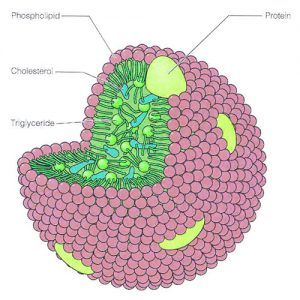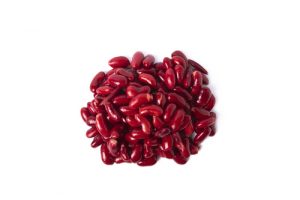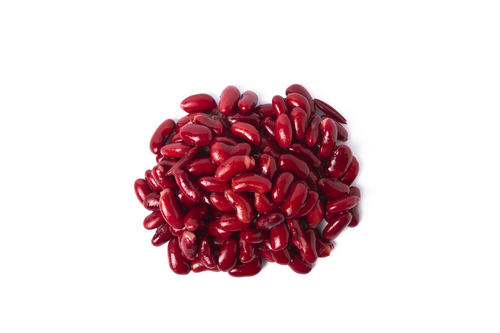Are you trying to lower your cholesterol level? Well, you are not alone! In fact, 39% of Canadians have an unhealthy level of total cholesterol, which may explain the high rates of heart diseases among our nation.
Cholesterol is one of the many types of fat circulating around your body. There are two types of cholesterol:

high-density lipoprotein (HDL), commonly referred to as “good” cholesterol, and low-density lipoprotein (LDL), commonly referred to as “bad” cholesterol. There is a strong association between high levels of LDL and risk of cardiovascular diseases, including atherosclerosis (hardening and narrowing of the arteries), which could in turn lead to heart attack and stroke. The good news is that cholesterol levels can be controlled through a healthy lifestyle.
Start by reducing your total fat intake by making changes in your dietary choices. Saturated fat in readily available in foods that come from animal sources including beef, sausages, butter, lard, whole-fat milk, cream, ice cream, and high-fat cheese. Coconut and palm oil, commonly found in commercially prepared foods (e.g. cakes, donuts, pies and cookies), are also high in saturated fats. But does this mean that you should avoid animal products all together? Paying attention to what you purchase at the grocery store can make a significant difference in your total fat intake. Here is a list of strategies to reduce your saturated fat intake:
 Replace foods that are high in saturated fat with those that contain unsaturated fats including fatty fish (e.g. salmon) and nuts (e.g. walnuts, almonds)
Replace foods that are high in saturated fat with those that contain unsaturated fats including fatty fish (e.g. salmon) and nuts (e.g. walnuts, almonds)- When buying meat, try to choose leaner cuts and avoid the marbled appearance, which is the visible fat. Before eating the meat, cut the visible fat off
- If you use ground beef, read the label and purchase “extra lean” meat.
- Before cooking, always remove the skin from poultry.Legumes or pulses are a great source of fibre!
- Practice low fat cooking methods such as baking, roasting, broiling, grilling, , steaming, and stir-frying.
- Choose lower fat dairy products such as skim or 1% milk, low-fat yogurt, low-fat cheese, etc.
- Replace butter with non-hydrogenated margarine.
- Avoid trans fats, which are commonly found in processed and commercially baked products
- Reduce your intake of foods that contain high levels of cholesterol, including: organ meat, shrimp, squid and egg yolk
Eating a diet high in fibre can also help lower cholesterol levels. Dietary fibre comes from plants foods and is comprised of two types: soluble and insoluble f ibre. It is the soluble fibre that has been shown to reduce total and LDL cholesterol levels. As a part of a cholesterol lowering diet, it is recommended that you consume at least 10 grams of soluble fibre a day. Some excellent choices include passion fruit, black beans and lima beans, which contain 5-6 grams of soluble fibre per serving. Most fruits and vegetables, such as oranges, asparagus, broccoli, sweet potato, carrots and apples, contain 1-2 grams of soluble fibre. Grain products such as barley, oats, pasta and bran cereal also provide you with 1-2 grams of soluble fibre. In addition to its direct effect on blood cholesterol levels, a diet high in soluble fibre helps you feel full for longer and can help with achieving a healthy weight.
ibre. It is the soluble fibre that has been shown to reduce total and LDL cholesterol levels. As a part of a cholesterol lowering diet, it is recommended that you consume at least 10 grams of soluble fibre a day. Some excellent choices include passion fruit, black beans and lima beans, which contain 5-6 grams of soluble fibre per serving. Most fruits and vegetables, such as oranges, asparagus, broccoli, sweet potato, carrots and apples, contain 1-2 grams of soluble fibre. Grain products such as barley, oats, pasta and bran cereal also provide you with 1-2 grams of soluble fibre. In addition to its direct effect on blood cholesterol levels, a diet high in soluble fibre helps you feel full for longer and can help with achieving a healthy weight.
Managing your weight is also important since excess weight, particularly around the waist, has been associated with higher cholesterol levels. Therefore, to control your blood cholesterol level it is important to adapt a healthy diet that is low in saturated fat and high in soluble fibre. In addition, if you are overweight, a small weight loss could significantly lower your blood cholesterol levels. Also don’t forget to stay active since regular physical activity helps increase the good HDL cholesterol and improve your total cholesterol status.
